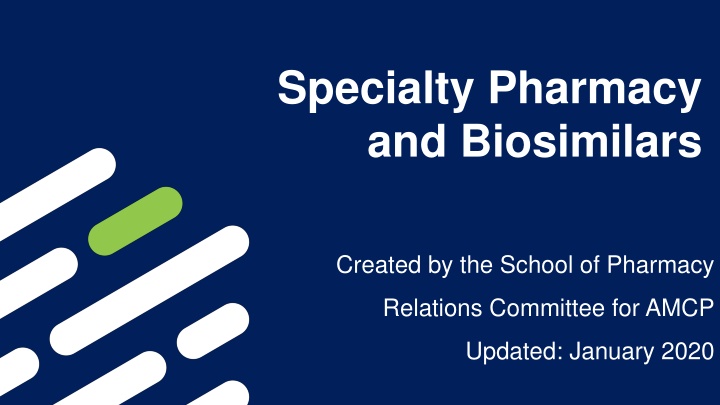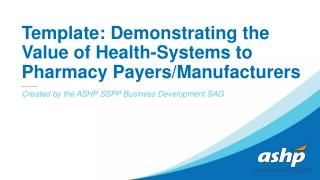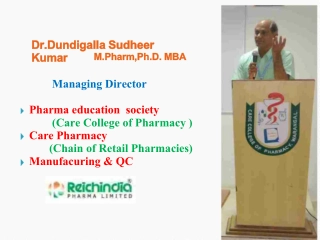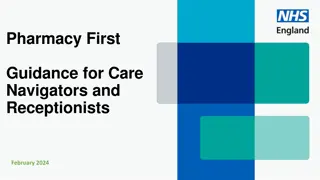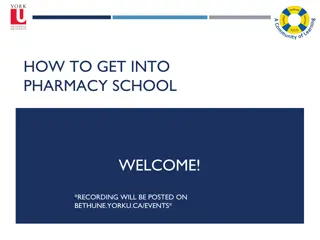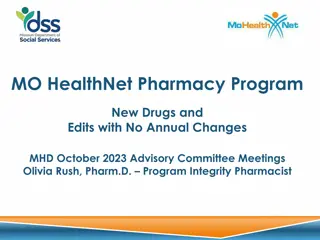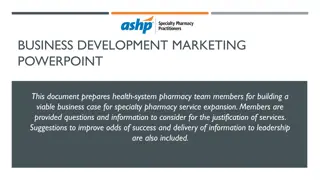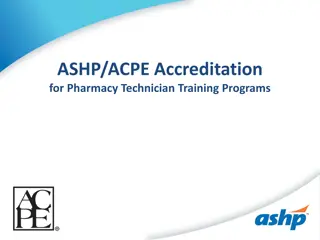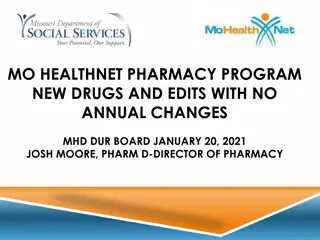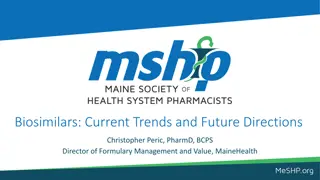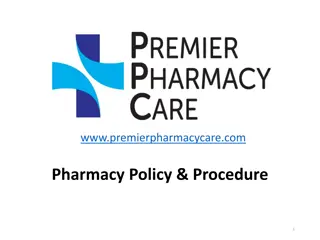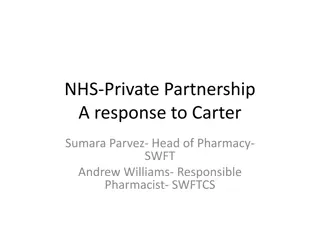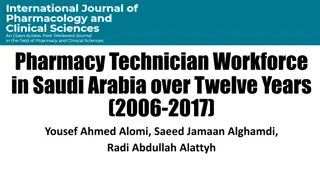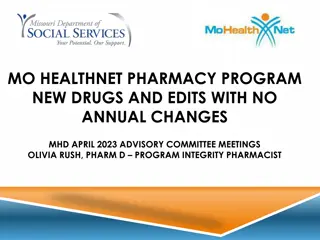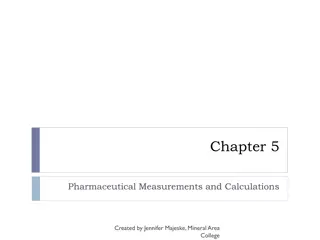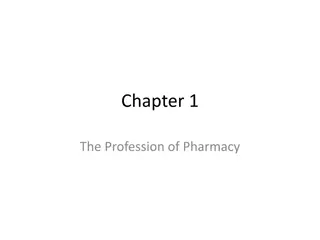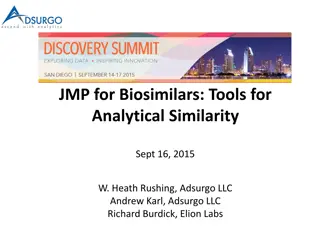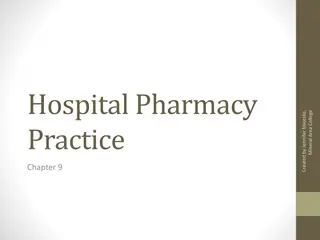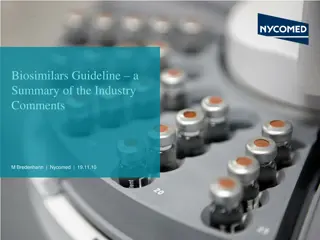Specialty Pharmacy and Biosimilars in Managed Care: A Comprehensive Overview
Specialty pharmacy and biosimilars play a crucial role in managed care, presenting unique challenges and opportunities. This overview covers the definition of specialty pharmaceuticals, their impact on drug spend, specialty pharmacy programs, and major providers in the industry.
Download Presentation

Please find below an Image/Link to download the presentation.
The content on the website is provided AS IS for your information and personal use only. It may not be sold, licensed, or shared on other websites without obtaining consent from the author.If you encounter any issues during the download, it is possible that the publisher has removed the file from their server.
You are allowed to download the files provided on this website for personal or commercial use, subject to the condition that they are used lawfully. All files are the property of their respective owners.
The content on the website is provided AS IS for your information and personal use only. It may not be sold, licensed, or shared on other websites without obtaining consent from the author.
E N D
Presentation Transcript
Specialty Pharmacy and Biosimilars Created by the School of Pharmacy Relations Committee for AMCP Updated: January 2020
Part 1: Specialty Pharmacy
Objectives Obtain an understanding of specialty pharmaceuticals Understand the challenges of specialty pharmaceuticals for managed care companies Describe the value that specialty products bring to the market
Definition of Specialty Pharmaceuticals Lack of universal definition Biologic, biological, biopharmaceutical, biotech Can include high cost injectable, infused product, oral agent or inhaled medication May require close supervision, monitoring and handling requirements Medicare s Part D definition for specialty: any drug for which the negotiated monthly price is $600 or more Can be administered at home, MD office, infusion center or outpatient hospital
Impact of Specialty Products Specialty drugs have been the fastest growing segment of drug spend under the pharmacy benefit PBM Prime Therapeutics LLC reported that in 2013, specialty drugs expenses amount to 33.4% of total (pharmacy and medical) drug costs. If current trends continue, it will represent more than 50% by 2018.1 According to PhRMA, there are currently over 7,000 new medications in the biopharmaceutical pipeline 1 Prime Therapeutics LLC. 2013 drug trend insights. Available at: https://www.primetherapeutics.com/PDF/specialtydtr2013/index.html. Accessed January 2, 2014.
Specialty Pharmacy Programs May include prior authorizations to ensure clinically appropriate and cost-effective use of treatments when certain criteria is met Incorporate evidence-based guidelines, dosing and discontinuation guidance, and monitoring Many specialty pharmacy providers have disease state management programs specific for conditions that are commonly treated with specialty pharmaceuticals
Specialty Pharmacy Providers Specialty pharmacy is often a subset of retail pharmacy in managed care Payers often contract specifically with specialty pharmacies to provide specialty pharmaceutical services to their members Many payers own their own specialty pharmacy o Cigna / Express Scripts Cigna Specialty Pharmacy / Accredo o Humana Humana Specialty Pharmacy o Caremark / Aetna CVS Specialty Pharmacy / Aetna Specialty Pharmacy
Components of Specialty Programs Refill reminders Delivery coordination Insurance verification Clinical interventions Patient education Adherence counseling Psychosocial assessment Patient assistance programs Integrated nursing staff
Commonly Targeted Disease States Blood disorders Cystic fibrosis Crohn s disease Ulcerative Colitis Growth hormone deficiency Hemophilia HIV/AIDS Infertility Pulmonary arterial hypertension Multiple sclerosis Hepatitis C Rheumatoid arthritis Psoriasis RSV Oncology
Challenges in MCOs Billing systems- integration of medical and pharmacy claims Utilization management Drug coding- NDC vs. J code Benefit design and patient cost share Debbie Stern and Debi Reissman, Specialty Pharmacy Cost Management Strategies of Private Health Care Payers, Journal of Managed Care Pharmacy, November/December 2006. http://www.amcp.org/data/jmcp/Nov-Dec06JMCP1.pdf Accessed February 3, 2010
Benefit Designs Cause of much confusion Medical benefit vs. pharmacy benefit Each MCO can design and deliver their own product and services Has led to additional formulary tiers Tier 4, Tier 5 and Tier 6 for example Traditionally associated with higher co-pays or co-insurances Many plans are moving towards new benefit designs for specialty drugs and therapies, including a specialty formulary
Impact on Patients Specialty expenditures per member increased by 11.1% from 2004 to 2008 (in a 8 million member commercial plan) Potential impact of shifting costs to patients with specialty drugs: Inability or refusal to pay for medications leading to decreased compliance Compliance issues may impact medical expenses and hospital costs
Monitoring for Adverse Reactions Prescription drug safety is key with specialty pharmaceuticals Problems arise when a drug offers significant therapeutic benefits but also carries challenging health or safety risks FDA Mandated Risk Evaluation and Mitigation Strategy (REMS) Many biologics and new therapies are subject to REMS Includes patient registries, ongoing patient monitoring, and certification for prescribers and pharmacies Specialty pharmacies have a high level of patient and physician interaction and specially trained therapy teams to assist with meeting these requirements
Summary Specialty pharmacy is a growing part of the pharmacy industry Specialty pharmacy providers continue to develop programs and value-added services to better manage patients Payers continue to develop new strategies to manage the high costs of these drugs Patients are often affected by the variance in coverage and cost shares
References Prime Therapeutics LLC. 2011 drug trend insights. 8/11. Available at: http://www.primetherapeutics.com/PDF/2011PrimeDrugTrendInsights.pdf. Accessed September 14,2011. Debbie Stern and Debi Reissman, Specialty Pharmacy Cost Management Strategies of Private Health Care Payers, Journal of Managed Care Pharmacy, November/December 2006. http://www.amcp.org/data/jmcp/Nov-Dec06JMCP1.pdf. Accessed February 3, 2010. Gleason PP, Starner CI, Gunderson BW, Schafer JA, Sarran HS. Association of Prescription Abandonment with Cost Share for High-Cost Specialty Pharmacy Medications. Journal of Managed Care Pharmacy 2009;15(8)648-58. Specialty pharmacy's role in REMS, FDA's new drug safety program. Formulary. 2009;44:300 308. FMCP Specialty Pharmacy Initiative: Phase I Discovery & U.S. Environmental Scan. October 2009. www.fmcpnet.org. Accessed February 1, 2010. The Biopharmaceutical Industry: Creating Research, Progress and Hope. http://www.phrma.org/about/biopharmaceutical_sector. Accessed February 1, 2015.
Part 2: Biosimilars
Biologics Price Competition and Innovation Act (BPCIA) Established in 2009 to create an abbreviated licensure pathway for biological products that are demonstrated to be biosimilar to or interchangeable with an FDA-licensed biological product.
Biologic Marketplace Kozlowski, S et al. NEJM. 365(5); 385-88.
Biologic Biologic: Therapeutic product derived from a biological source Vaccines Antitoxins Blood products Proteins Monoclonal antibodies www.fda.gov
Biologics Vs. Small Molecules Biologics, including biosimilars are much more complex than small molecule drugs Large biologic Small biologic Small molecule drug COMPLEXITY
Biosimilar Biosimilar Highly similar to the U.S. licensed reference biological product notwithstanding minor differences in clinically inactive components No clinically meaningful differences from the reverence product in terms of safety, purity, and potency www.fda.gov
Interchangeable Interchangeable Biosimilar to the U.S. licensed reference product Expected to produce the same clinical result to the reference product in any given patient If a product is indicated for multiple administrations, then the product must be able to be alternated with the reference product without any loss of efficacy or change in risk of adverse events May be substituted at the pharmacy level without the intervention of a healthcare provider www.fda.gov
Biosimilar 351(k) Application In order to be granted biosimilar status by the FDA, the biological product must show clinical data derived from: Analytical studies that demonstrate that the biological product is highly similar to the reference product notwithstanding minor differences in clinically inactive components; Animal studies (including the assessment of toxicity); and A clinical study or studies (including the assessment of immunogenicity and pharmacokinetics or pharmacodynamics) that are sufficient to demonstrate safety, purity, and potency in one or more appropriate conditions of use for which the reference product is licensed and intended to be used and for which licensure is sought for the biological product. http://www.fda.gov/downloads/Drugs/GuidanceComplianceRegulatoryInformation/Guidances/UCM291128.pdf
Biosimilar 351(k) Application Stepwise Approach: Extensive structural and functional characterization of both products Animal data if contains pertinent information not able to be obtained from humans (e.g. toxicity) Human Pharmacokinetic studies Human Pharmacodynamic studies Compare clinical immunogenicity If inconsistencies exist, consider clinical trial with appropriate safety and efficacy measures http://www.fda.gov/downloads/Drugs/GuidanceComplianceRegulatoryInformation/Guidances/UCM291128.pdf
FDA Purple Book First published September 9, 2014 Lists biological products, including any biosimilar and interchangeable biological products licensed by the FDA under the Public Health Service Act (PHS Act) Includes the date a biological product was licensed under 351(a) of the PHS Act and whether the FDA evaluated the biological product for reference product exclusivity under section 351(k)(7) Shows if the FDA has determined a product to be biosimilar or interchangeable with an already licensed FDA reference biological product Biosimilar and interchangeable products are listed under the reference product
Biosimilar: Filgrastim First application under the new biosimilar pathway brought to an FDA advisory committee On January 7th, 2015, the FDA Oncologic Drugs Advisory Committee unanimously voted that Sandoz s EP2006 (Zarxio) should be licensed as biosimilar to the reference product, Neupogen Includes all 5 indications for which Neupogen is approved Zarxio (filgrastim-sndz) was approved March 6, 2015 as a biosimilar, not an interchangeable Route of administration, indications and side effects are the same as Neupogen Launched September 3, 2015 15 percent wholesale list price discount
Biosimilar Naming Nonproprietary Naming of Biological Products Guidance finalized January, 2017 Per FDA Guidance biosimilars receive a nonproprietary name consisting of a common core plus a unique FDA- approved suffix composed of four lowercase letters For example, for products sharing the core name replicamab, those proper names may be displayed as: -replicamab-cznm -replicamab-hixf The proposed suffix should: o Be unique o Be devoid of meaning o Be four lowercase letters of which at least three are distinct o Be nonproprietary o Be attached to the core name with a hyphen o Be free of legal barriers that would restrict its usage www.fda.gov
Outstanding Questions How much will the addition of biosimilars lower costs to the health care system? Will increased access to biologics lead to better health outcomes overall? How will managed care organizations manage these agents?
References Information for Healthcare Professionals (Biosimilars). http://www.fda.gov/Drugs/DevelopmentApprovalProcess/HowDrugsareDevelopedandApp roved/ApprovalApplications/TherapeuticBiologicApplications/Biosimilars/ucm241719.htm. Accessed February 1st, 2015. "Biosimilars," Health Affairs, October 10, 2013. Accessed February 1st, 2015. Purple Book. http://www.fda.gov/Drugs/DevelopmentApprovalProcess/HowDrugsareDevelopedandApp roved/ApprovalApplications/TherapeuticBiologicApplications/Biosimilars/ucm411418.htm. Accessed February 1st, 2015. Kate Traynor. FDA Advisers Recommend Approval of Biosimilar Filgrastim. http://www.ashp.org/menu/news/pharmacynews/newsarticle.aspx?id=4163. January 26th, 2015. Accessed February 1st, 2015.
Thank you to AMCP member Jorge Farias for updating this presentation for 2016.
Mission & Vision To improve patient health by ensuring access to high-quality, cost-effective medications and other therapies.
